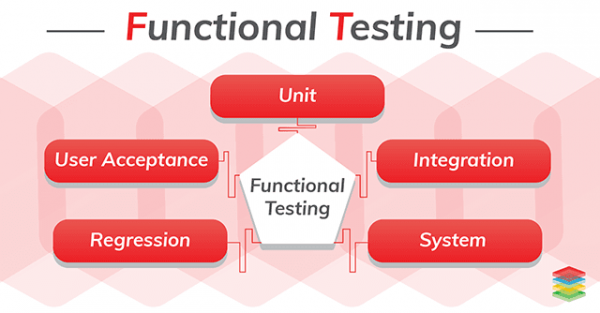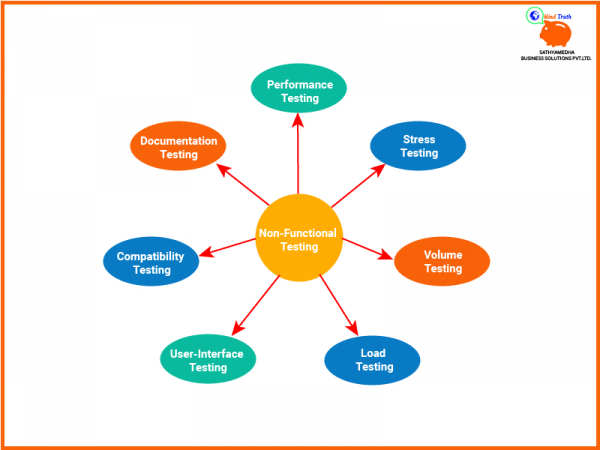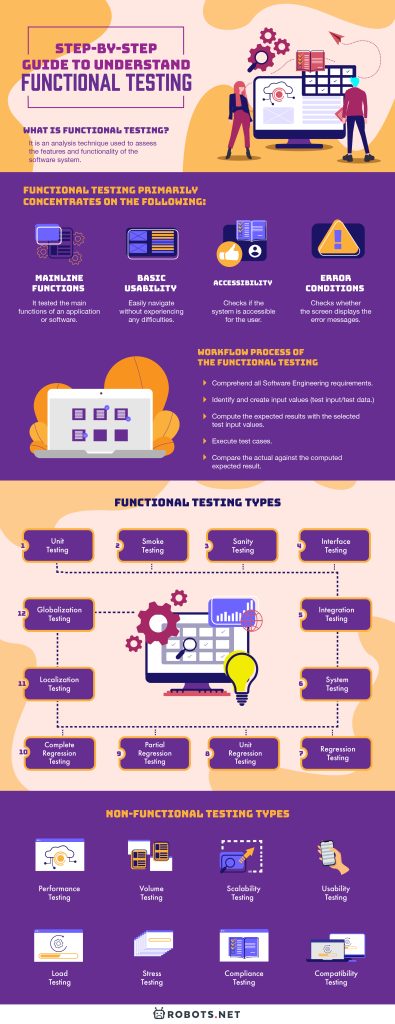What is Functional Testing?
It is an analysis technique used to assess the features and functionality of the software system. Usually, functional testing is an automated process. In this process, the QAs determine if the developed software operates according to the pre-determined requirements. It is a type of software testing that validates the software system against the requirements and specifications. In simpler terms, we can describe it as testing that checks an application, system, or website to ensure that it will perform accordingly. Functional testing involves using Black-box testing techniques. In this technique, the tested internal logic of the system is unknown to the tester. Also, it is not concerned about the source code of the application. Functional testing is only concerned with validating system functionality. As intended and should cover all the possible scenarios including failure paths and boundary cases. This testing checks User Interface (UI), Application Programming Interface (APIs), Database, Security, Client/Server communication and other functionality of the application under test. What is Functional testing being tested some might asks? Generally, functional testing checks the functionalities of the software system. And it primarily concentrates on the following:
Mainline Functions
Basic Usability
Accessibility
Error Conditions
Workflow Process of The Functional testing
Generally, the process workflow of a functional test includes the following steps:
Functional Testing Types
The process of Functional testing involves a series of tests. Below are some of the prominent types of Functional Testing:
1. Unit Testing
In this testing, the developers perform it. They write different code units that relate or not to achieve a particular functionality. Developers also write scripts that can test if the individual components match the requirements. This process usually requires writing unit tests. It will call the methods in each unit and validate the passed parameters, and the expected value will be return. In unit testing, code coverage is important because it ensures that test cases exist to cover the following:
Line Coverage Code Path Coverage Method Coverage
2. Smoke Testing
This next level of testing will be performed after the release of each build. This is to ensure that the software stability is intact and not facing any anomalies. Smoke testing is also called “Build Verification Testing”.
3. Sanity Testing
This testing will be performed when the testers don’t have much luxury of time. Sanity testing is the level of testing where the Quality assurance team verifies the menus, functions, commands and other major functionality available in the product. It will also check if the project is working perfectly, both by itself and in combination with other elements. Sanity testing is usually performed after Smoke testing.
4. Interface Testing
Web server and application server interface Application server and Database server interface
Basically, interface testing is done to:
Check if the servers are properly executed or not You can check if you can handle and deal with the errors properly Check the outcomes when the connection to a web server is reset in between
5. Integration Testing
6. System Testing
Defined as testing that performs on a complete system to verify if it works as expected after the integration of all the modules or components. The purpose of this test is to evaluate and validate the system’s compliance with the specified requirements. System testing is therefore done after Integration testing
7. Regression Testing
These are the following regression techniques that might be very handy in your system: This approach uses a bird’s eye view philosophy to test the code. The tester has a list of items to test every time a change transpires. This simple method is the perfect way to start regression testing.
9. Partial Regression Testing
It is an approach that divides the project into logical and coherent units. It works together to form the application. In this technique, you can select the most critical units for the application. Also, the specific cases are defining for them, while performing unit regression testing for the rest of the modules.
10. Complete Regression Testing
This final technique is the most detailed form of regression testing. You have to take a comprehensive view of the codebase to identify all functionalities. It can affect usability on breaking and write detailed tests for each of them. This approach may be a bit time-consuming but you can apply for its benefits from the early stages of the project development.
11. Localization Testing
There are several tested aspects during the Globalization testing and these are the following:
12. Globalization Testing
Sensitivity to the language vocabulary
To verify if the application uses the proper vocabulary for each language, you can use different language translators. This is an important aspect since a global product need to support many languages. Therefore, in this testing, you can switch the application to different languages. You can also test the response and the performance of the application. For example: India: Hindi and English
Date and time formatting
The formats of date and time may differ from one place to another. Therefore, an application should support all kinds of formats including the 24 and 12-hour notation. For example:
Currency format
Currency may vary from one country to another. So again, the application should support all kinds of currency formats. The application should display the appropriate unit and symbol of currency. For example:
Phone and mobile number formatting
Every country has a different phone and mobile number formats. Also, the International Subscriber Dialing (ISD) differ from each country. Therefore, the application should support all formats. For example:
Address formatting
Address formats also differ from one country to another, although some may have the same formats. However, to cover all and ensure that you can use the application all over the world. The applications should support all types of formats in address formatting. For example: Hungary: Addressee (Name or Company Name)/ City or Town/ Street name, Number, and floor/door/, or P.O Box Number/ Postal Code
Zipcode format
The zip code also varies from one country to another, or may even vary from one place to another in the same country. For example:
Non-functional Testing Types
Here is the checklist in conducting Performance Testing:
Performance Testing
The response time of application. This means that you should verify the application. Verify its loading speed or any possible input given to the application, it’s output, how much time you refresh the browser and its likes.
Throughput. This means that you should verify the application should on the number of transactions completed during a load test
Environment. This means that the environment set up of the application should be the same as the live environment else, the results will be totally different
Process time. It is the process of verifying and testing the activities (e.g. import and export of excel) or any calculations in the applications.
Interoperability. You should verify the interoperability. It means that software or application should be able to inter-operate with the other software or application systems
Extract, Transform, Load (ETL). This is the testing and validation while doing the extracting, transforming and loading of data from one database to another.
Increasing Load. You should verify the increasing load of the application.
Volume Testing
When software subjects to a large amount of data, volume testing checks the limit where the software fails. You can generate maximum database size, multiple clients query to the database and create a larger report.
Scalability Testing
Usability Testing
Load Testing
Compliance Testing
To summarize, the primary objective of load testing is to define the maximum amount of work a system can handle without significant performance degradation.
Stress Testing
Thus, Stress testing tries to break the system under test by overwhelming its resources. Therefore, the main purpose of Stress testing is to make sure that the system fails and recovers easily. You can also use Stress testing to uncover data corruption and hardware issues.
Portability Testing
Having defined Functional and Non-functional testing and citing some different testing types.
Compatibility Testing
In short, Compatibility testing deals with testing two different applications in the same environment while Portability testing deals with software components across multiple environments. Remember, customer satisfaction increases with a well-tested product. Thus, conducting Compatibility testing can help in assessing and improving the product.
The Differences between Functional Testing vs Non-functional Testing
Here is a summary of the differences between the two:
Conclusion
Testing and Quality Assurance indeed plays a vital role in software development. It determines the success and effectiveness of a product that satisfies or exceeds a customer’s satisfaction. In the development of a software product, the scope is so massive. To fully comprehend, assess and evaluate a product, several techniques should be employed. That is to guarantee that the quality of the product shall pass and surpass the requirements and anticipations of a client.



